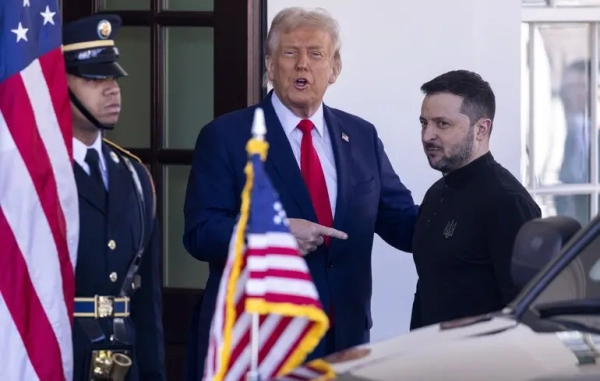
Conservatives were much more likely than liberals to retweet Russian trolls in the 2016 election, according to a new study from researchers at the University of Southern California released this month. It traced Russian efforts to influence America’s 2016 presidential campaign via Twitter using 45 million election-related tweets generated by 5.7 million users in a one-month period ahead of the election; researchers delved into what information was spread by trolls, who spread it, and how many times those tweets were shared. The study focused on content from the 2,752 now-deactivated Russian troll accounts identified by Congress in November.
The USC researchers found that conservatives retweeted Russian trolls about 31 times more often than liberals and produced 36 times more tweets. Most retweets of the trolls came from two specific states: Tennessee and Texas. Of the accounts analyzed, they estimated that 4.9 percent of liberal-leaning accounts that spread troll content were bots, and 6.2 percent of conservatives ones were bots.
“Although an ideologically broad swath of Twitter users were exposed to Russian trolls in the period leading up to the 2016 US presidential election, it was mainly conservatives who helped amplify their message,” USC researchers Adam Badawy, Emilio Ferrara, and Kristina Lerman wrote.
During the period they examined — September 16 to October 21, 2016 — the researchers found that trolls were producing more conservative content than liberals, but also that conservative users were much more inclined to amplify the message. There were about four times as many Russian trolls posting conservative content than liberal ones, and they produced about 20 times more content, most of which had a right-leaning, pro-Trump agenda. Conservative-leaning Twitter users were picking up what Russian trolls were putting down.
Conservatives tend to fall into the “fake news” trap a little more often than liberals, and there are a multitude of reasons why
Another recent study from an Oxford University project on computational propaganda found that on both Twitter and Facebook, Trump supporters and extreme hard-right conservatives consume and share a disproportionate amount of fake news. Researchers looked at three months of social media data leading up to President Donald Trump’s State of the Union address and how users interacted with what they deemed “junk news” — 91 sites they identified as having problems with credibility, bias, and professionalism.
“On Twitter, a network of Trump supporters shares the widest range of known junk news sources and circulates more junk news than all the other groups put together,” the researchers wrote. “On Facebook, extreme hard right pages — distinct from Republican pages — share the widest range of known junk news sources and circulate more junk news than all the other audiences put together.” (The study did not delve into Russian propaganda or users.)
That conservatives are seemingly prone to spread content from Russian trolls or junk news isn’t a matter of intelligence — it might be because they are more attuned to threats, even if those threats aren’t real. A study published in the journal Psychological Science (and cited by the Atlantic) found that right-leaning people are often hyper-attuned to what they perceive as potential hazards and tend to believe signs of danger rather than ignore them.
“Conservatives approach the situation from the start with greater reactivity to threat, a greater prior belief to the level of danger in the world, so it is logical for the conservative to take more seriously information about hazards than the liberal does,” Daniel Fessler, the University of California Los Angeles professor behind the study, told the Atlantic’s Olga Khazan.
Other researchers have also found that beyond risk perception, liberals appear to have more of a need to think critically than conservatives. In a conversation with the Washington Post’s Christopher Ingraham, professor Stefan Pfattheicher of Ulm University noted it’s not a question of intelligence, just ways of thinking. “This seems to be more a matter of motivation to process information (or news) in a critical, reflective thinking style than the ability to do so,” he said.
The fake news problem in the United States shows little signs of subsiding. The shooting at the Marjory Stoneman Douglas High School in Florida and students speaking out after it gave birth to multiple conspiracy theories online, Vox’s Matt Yglesias noted, many of which took root on the right. (Something similar happened after the shooting at Sandy Hook Elementary School in 2012.) Right-wing celebrity and former Sheriff David Clarke on Twitter alleged student organizers were being backed by George Soros; Donald Trump Jr. liked a tweet suggesting the student movement was part of some larger anti-Trump plot at the FBI. And as the New York Times notes, hours after the shooting, Russian bot accounts on Twitter released hundreds of posts to fuel the gun debate.
It’s a problem Americans on both sides of the aisle have to contend with. Conservatives might want to think a little more liberally before they click “share.”
Sourse: vox.com






